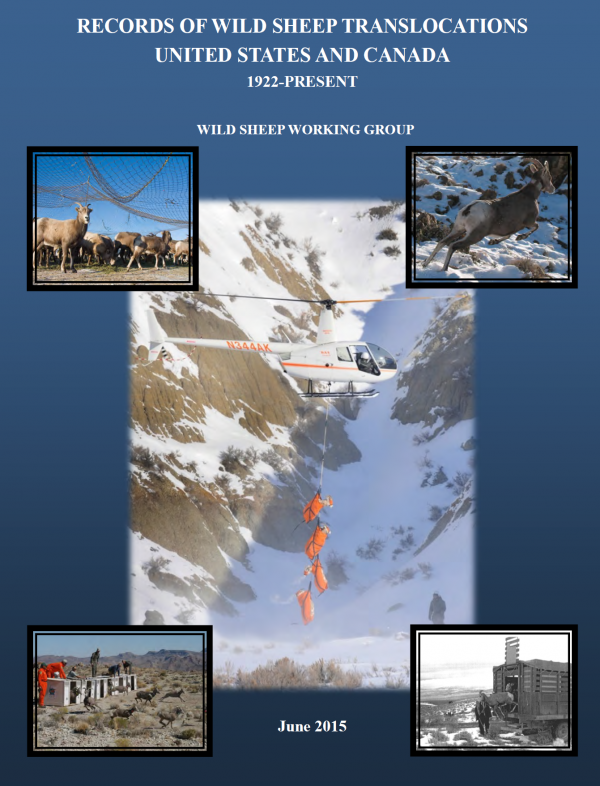Translocations have played an integral role in bighorn sheep restoration and management. Use of translocations for restoring wild sheep began in 1922 with the capture of 20 bighorns in Alberta, Canada and subsequent release of 12 animals in Montana and 8 animals at Custer State Park, South Dakota. Since then, at least 1,460 separate projects have resulted in the translocation of more than 21,500 bighorn sheep in the United States and Canada combined. The roots of today’s bighorn populations in Nebraska, North Dakota, South Dakota and Texas can be traced entirely to translocations. The translocations reflected in these maps resulted in successful establishment of self-sustaining populations on many historic ranges, increased numbers and genetic diversity of individual populations, and expanded ranges of existing populations. The intent of this project, produced by the WSWG, is to record and archive all known captures and translocations within the 19 United States and Canadian jurisdictions inhabited by bighorn sheep. There are separate maps for each jurisdiction showing in-state, import and export translocations.
Suggested Citation: Wild Sheep Working Group. 2015. Records of Wild Sheep Translocations-United States and Canada, 1922-Present. Western Association of Fish and Wildlife Agencies, USA.
Attached Files
| File | Action |
|---|---|
| Records-of-Wild-Sheep-Translocations-United-States-and-Canada-1922-Present-Reduced.pdf | Download |
- Version
- File Type pdf
- File Size 14.39 MB
- Publication Date June 1, 2015
- Download Count (since 10/2020) [2292]
